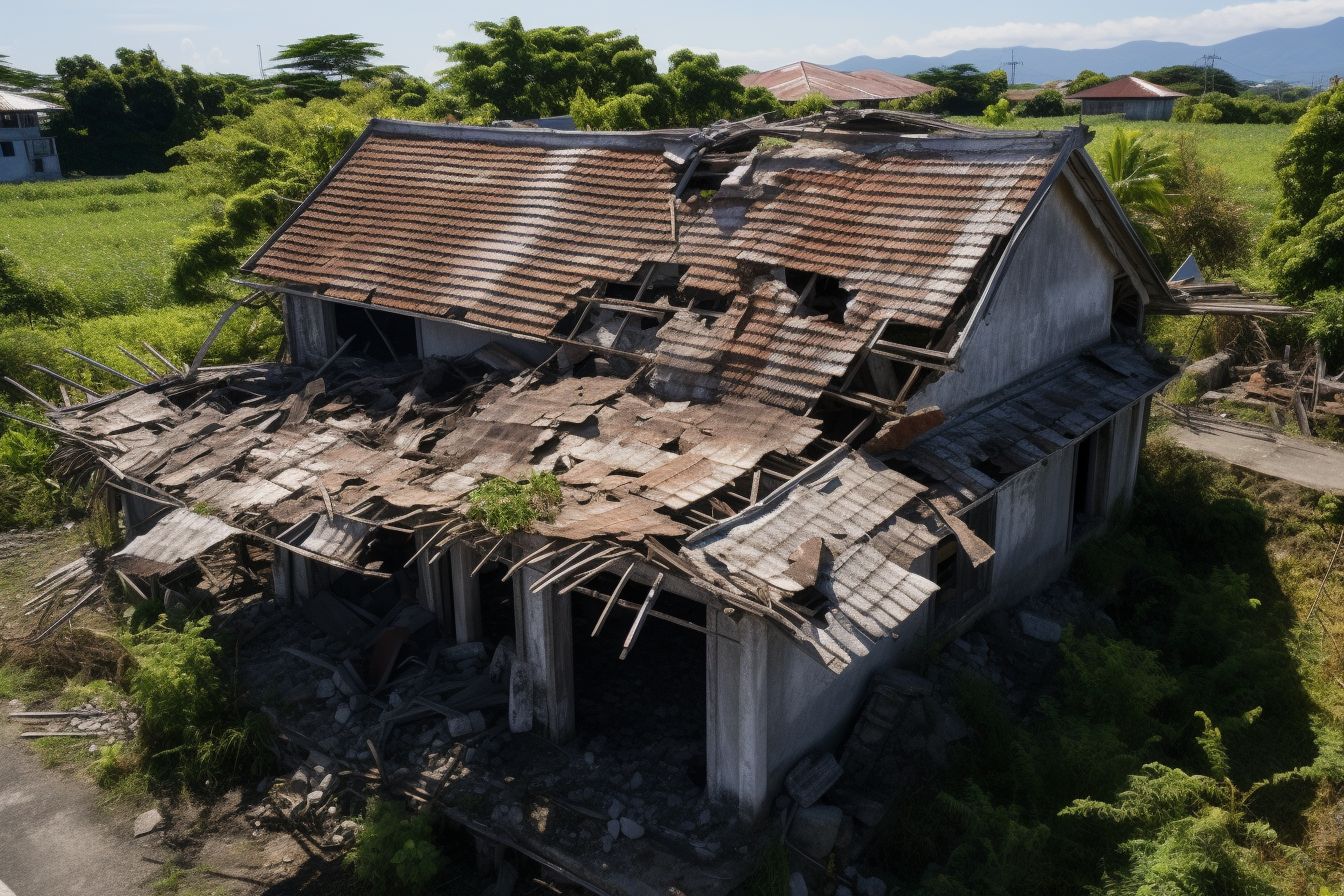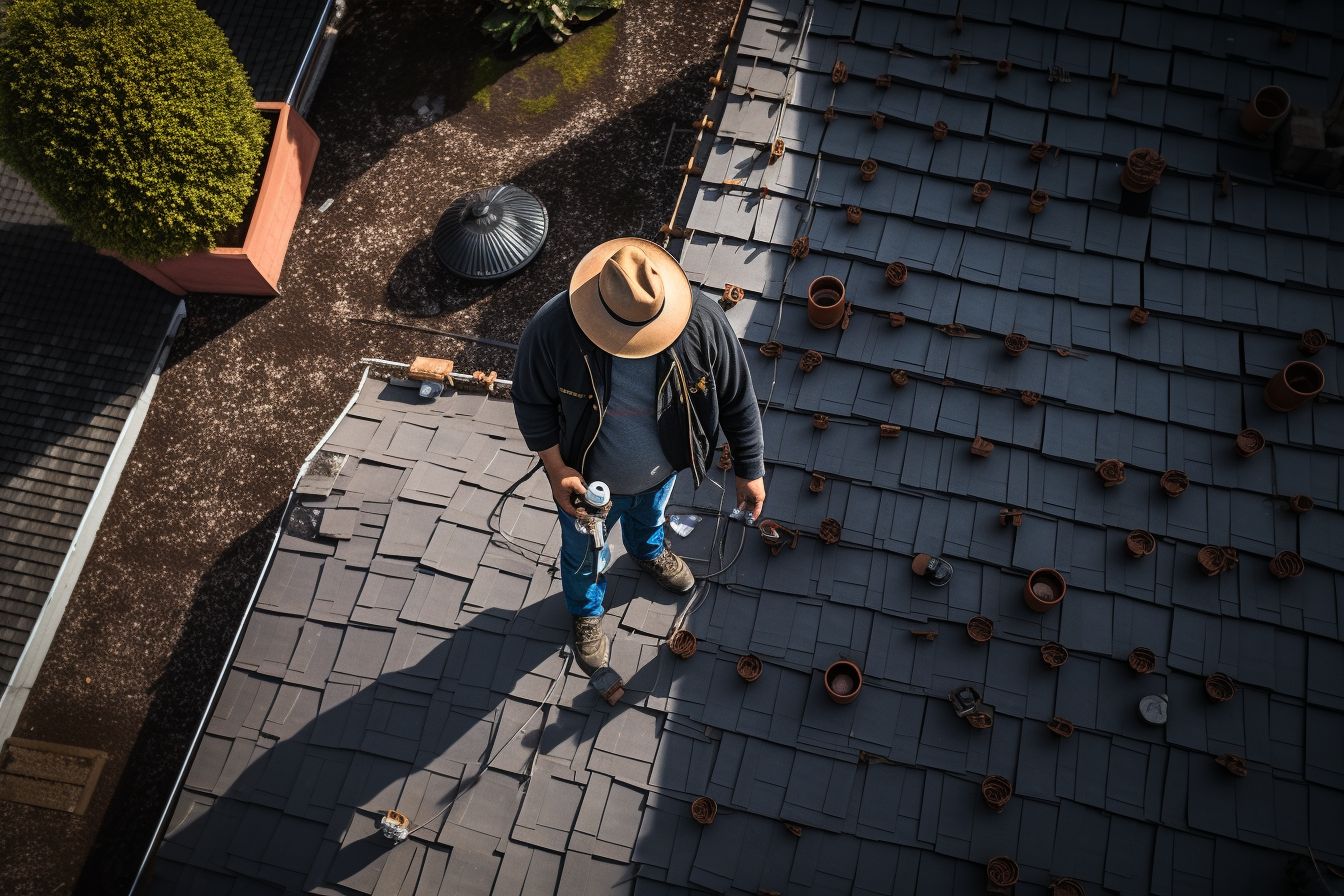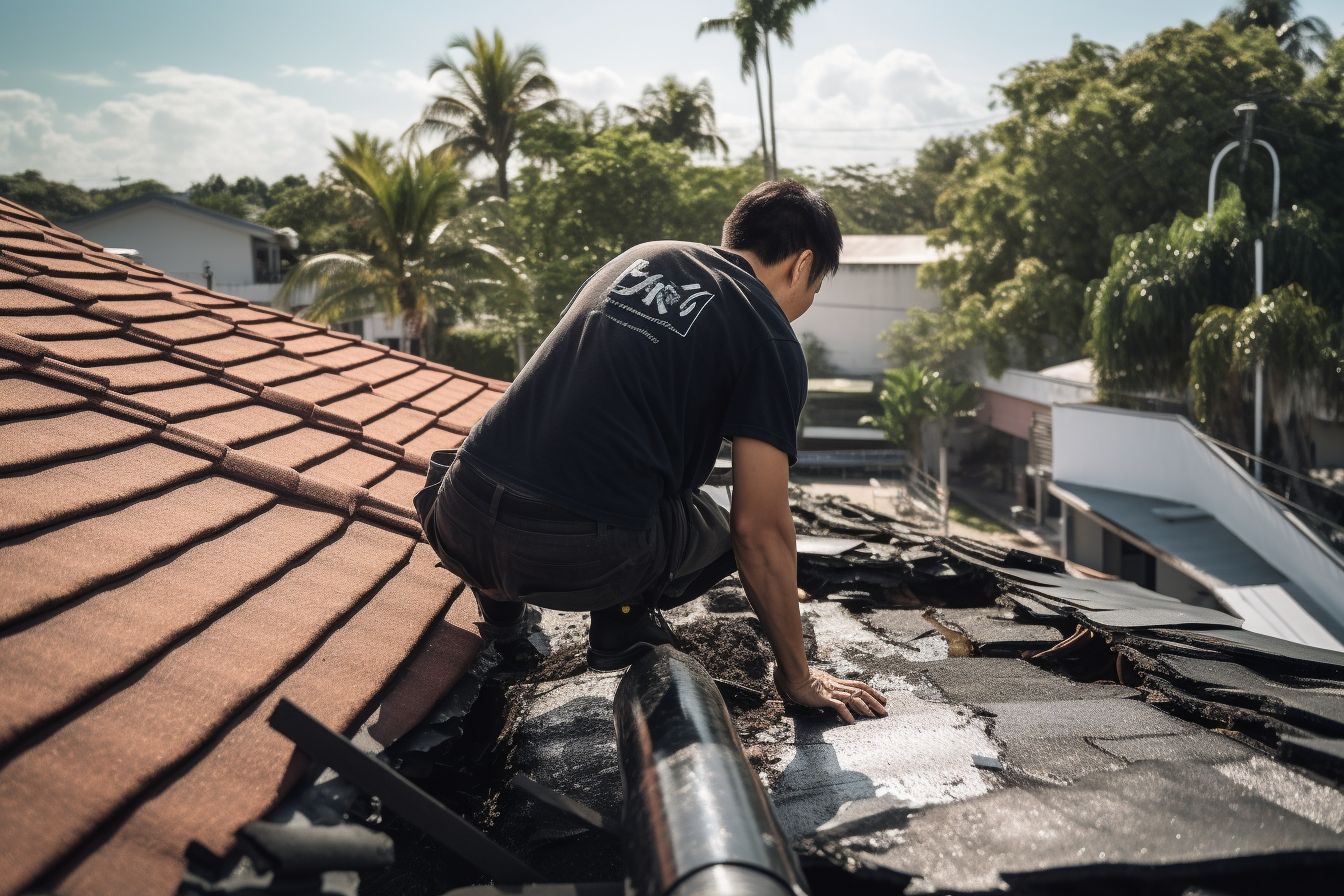Does your roof appear to be sagging and you’re unsure what that means for your home? A sagging roof is more than just an aesthetic issue – it can signal serious structural damage. In this blog post, we will uncover the potential dangers of a sagging roof, its causes, and how to prevent it.
Stay tuned to equip yourself with knowledge and keep the integrity of your home uncompromised!
Key Takeaways
- A sagging roof can indicate serious structural damage and pose a risk of collapse.
- Water damage from leaks can weaken the roof’s structure and lead to further deterioration.
- Excessive weight from snow or ice can overload the roof, accelerating its failure.
- Regular inspections, cleaning gutters, trimming overhanging branches, and addressing moisture issues can help prevent roof sagging.
- Investing in proper insulation and ventilation can boost the health of your roof.
- Repairing a sagging roof requires professional expertise to assess the damage and provide effective solutions accurately.
Understanding the Structure of Your Roof
 Sheathing and
Sheathing and
A roof comprises several critical elements, including the sheathing and flashing. The sheathing forms the base layer where other roofing materials are installed. If weakened, it could cause sagging in the roof and pose a possible danger.
Flashing is another crucial component that seals off joints on your roof to keep water out. Proper installation of these two aspects will significantly contribute to preventing any future sagging.
The design of your roof greatly affects its ability to handle weight, as structural flaws can lead to an inability to support heavy loads, resulting in a sagging roof. A well-designed roof should support itself without caving under its weight or compromising the strength of supporting walls and beams.
Therefore, understanding your roofing system’s structure is one step closer to maintaining its longevity and safety for everyone underneath it.
Identifying a Sagging Roof
Identifying a sagging roof in time is the key to preventing significant structural damage. Here are various signs that you need to look for:
- A visible curve or dip in your roofline.
- Cracks appear on the interior walls of your home.
- The presence of water leaks in certain areas.
- Your doors and windows become harder to open or close due to a shift in the structure.
- Deformed or twisted support beams observed in attics.
- Decrease in roof integrity, such as missing or damaged shingles.
The Dangers of a Sagging Roof

A sagging roof poses several immediate and potential dangers that homeowners should always pay attention to. The most pressing danger is the risk of a roof collapse. A sagging roof can indicate severe structural damage, suggesting the entire structure might cave in if left unchecked.
This situation ruins your home and subjects everyone inside to high safety risks.
Water damage is another concern tied to a sagging roof. Over time, the water accumulated from leaks exacerbates the condition by weakening the joists supporting your roof, leading to further decay and degradation of your property’s structural integrity.
Accumulation of snow or ice adds excessive weight to the already deteriorating framework, speeding up its inevitable failure if symptoms are ignored, and necessary repairs aren’t done promptly.
How to Prevent Your Roof from Sagging

Regular inspection and maintenance of your roof structure is crucial in preventing sagging. Here are some steps you can take to keep your roof in good shape:
- Schedule regular roof inspections: Hire a professional to inspect your roof at least once a year to identify any potential issues early on.
- Keep the gutters clean: Clogged gutters can lead to water buildup, which adds unnecessary weight to your roof. Please clean your gutters regularly to prevent this.
- Trim overhanging branches: Branches touching or hanging over your roof can cause damage and stress the structure. Trim them back regularly.
- Check for signs of moisture: Moisture can weaken the integrity of your roof over time. Please be sure to look for signs of leaks, water stains, or mould growth and address them promptly.
- Avoid excessive weight on the roof: Avoid adding excessive weight, such as heavy snow accumulations or large equipment, as it can contribute to sagging.
- Invest in proper insulation and ventilation: Proper insulation helps regulate temperature and prevents moisture buildup, while good ventilation helps maintain the health of your roof.
Repairing a Sagging Roof: Importance of Professional Help

Repairing a sagging roof is not a DIY project; it requires the expertise of professional roofing contractors who can accurately assess the damage and provide effective solutions. Please don’t risk further damage or potential injury, you can learn why professional help is essential to fix your sagging roof.
Roof sagging can be a serious issue that requires professional help. If you notice any signs of roof sagging, it’s important to address the problem immediately to prevent further damage.
Hiring a reputable roofing contractor, like those at Roof Repair Services, is crucial for fixing a sagging roof effectively. They have the expertise and knowledge to assess the extent of the structural damage and provide appropriate solutions.
By relying on their expertise, you can ensure that your roof is repaired safely and maintains its structural integrity for years.
Don’t wait until it’s too late – contact Roof Repair Services today if you’re dealing with a sagging roof. Their team of professionals will handle the repair process efficiently and effectively, ensuring your home remains safe and structurally sound.
Conclusion
A sagging roof poses significant dangers to your home and family. It can lead to roof collapse, structural damage, and water leakage, causing rotting roofs, weak foundations, and cracked walls.
Don’t overlook the warning signs – take immediate action to prevent further damage or injury by consulting a professional roofing contractor for repairs and maintenance. Keep your roof in top condition to ensure the safety and longevity of your home.
FAQs
1. How can I tell if my roof is sagging?
You can tell if your roof is sagging by looking for visible signs such as a drooping appearance, unevenness, or dips in the roofline.
2. What are the dangers of a sagging roof?
A sagging roof can lead to structural instability and potential collapse. It can also cause water leakage, mold growth, and damage to the interior components of your home.
3. Can a sagging roof be repaired?
Yes, a sagging roof can be repaired depending on the extent of the damage. It may involve reinforcing or replacing damaged roofing materials and ensuring proper support structures are in place.
4. Should I attempt to fix a sagging roof myself?
No, it is not recommended to fix a sagging roof yourself as it requires professional expertise and knowledge of structural engineering principles. Contacting a licensed roofing contractor is advised.
5. How much does it cost to repair a sagging roof?
The cost of repairing a sagging roof will vary based on factors such as the size of the affected area, extent of damage, and necessary repairs required for structural integrity. Consulting with an experienced roofer can provide an accurate estimate for your specific situation

